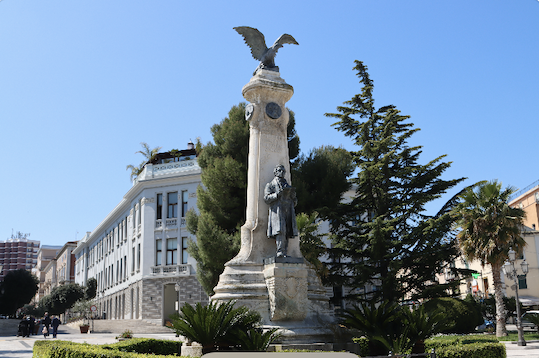VASTO
A walk through two thousand years of history and beauty
Vasto, on its hill close to the coast, is a collection of breathtaking views. Furthermore, the city is a compendium of two thousand years of history that you can relive by walking in one of the largest historical centers in this part of Italy.
To let you fully enjoy it, we have prepared seven itineraries that wind through the streets of the centre. Each itinerary is a story that will take you to a different era and will introduce you to the monuments, facts and characters of that period, in a compelling story that belongs to the history of Vasto, but also, more generally, to the history of southern Italy.
Roman Histonium
The Roman city called Histonium extended in the area that corresponds to the current district of San Pietro. The Roman city was in turn built on a previous Italic settlement of the Frentani people. South of the Roman town stood a large amphitheater whose area corresponds to that of today’s Piazza Rossetti, the center of the modern city.
Many remains of the Roman city are still visible. First of all, the Roman baths with its stupendous mosaics, but also long stretches of opus reticulatum, the Roman bricks that are visible on the walls of the houses in via Anelli.
The amphitheater below Piazza Rossetti has never been the subject of archaeological excavations, but some walls are visible in the shop windows, while the large Roman cisterns that supplied water to the city have become a restaurant. Another enchanting point is the Adriatica road where a landslide made it possible to discover the foundations of the temples of what was the ancient city Capitol.
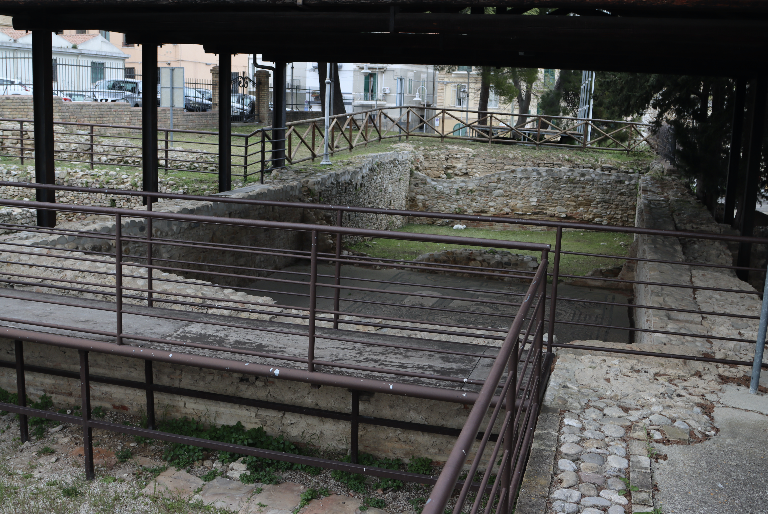
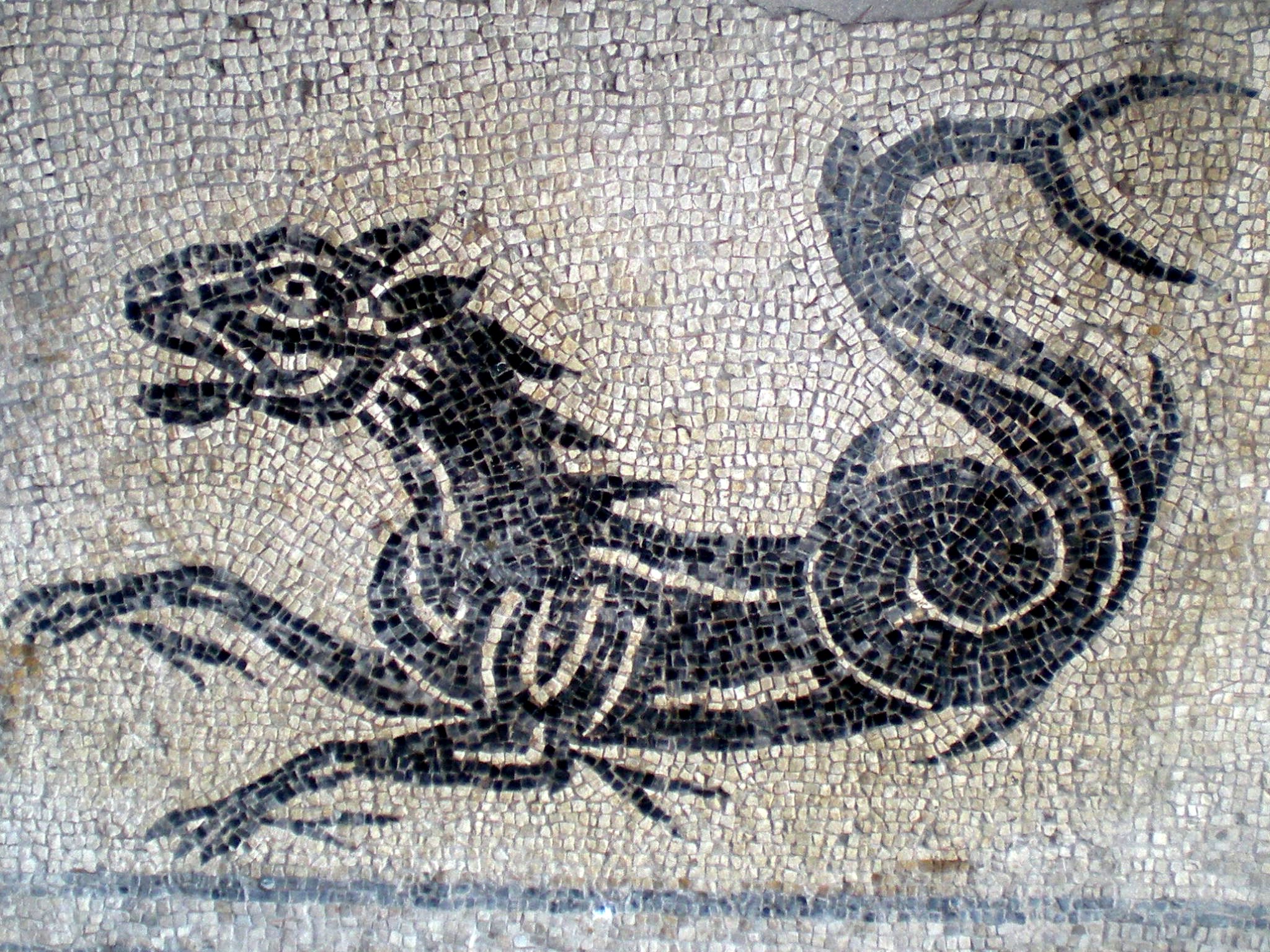
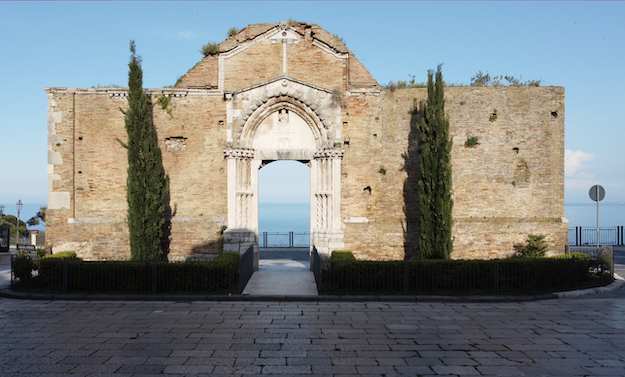
Guasto d’Aymone
Having become part of the Lombard duchy of Benevento, Histonium was conquered by the Franks in 802. Charlemagne gave it to the court paladin Aimone di Dordona (also sung in the Carolingian Cycle, father of Rinaldo and Bradamante). From the Germanic term Wast, which indicates the type of feud, the place took the name of Guasto d’Aymone.
After the year 1000 the village became a possession of the abbey of Farfa, therefore under the direct control of the Church. For this reason, in 1177 Pope Alexander III found refuge for over a month in the collegiate church of San Pietro during his fights against Federico Barbarossa. Today of the large fortress church, following the landslide of 1956, unfortunately only the facade remains with the Majella stone portal from the 13th century.
The district is particularly interesting because, in addition to the splendid view of the sea from Via Adriatica, it has two areas in the road network, both built on the pre-existing Roman plan, but clearly distinct: the medieval one and the fifteenth-century one, incorporated with the expansion of the walls in 1439. In the latter, many eighteenth-century or early nineteenth-century palaces are noteworthy.
Medieval district
The district of Santa Maria corresponds to the old Castel Gisone, a castle built on the remains of Roman works, in particular the amphitheater which was located south of the ancient town of Histonium. The entire district developed around a fortress, the “battle” which later became the basis of the gigantic bell tower of the Church of Santa Maria Maggiore.
The exterior of Santa Maria does not have a regular structure, but is an open book on the transformations of this part of the city. Going around it, you can observe the remains of the porch of the previous church. Arrived in Piazza del Tomolo, the ancient market and also the place of the pillory, you will instead find the tombstone of an ancient Norman warrior walled up in the church. Many folk legends are connected with this image.
Around the church, you can stroll through the intricate and fascinating maze of medieval alleys. You will then look out onto the Amblingh loggia, the stupendous balcony built close to the ancient medieval walls. If you do it through Porta Catena, the only gateway to the city that has survived in its ancient forms, you will be in one of the most beautiful panoramic points in Abruzzo. In front of you, you will only have the Gulf of Vasto in its splendid colors.
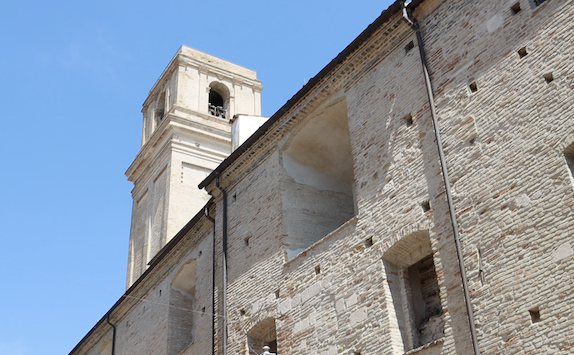

The Caldora walls
When Giacomo Caldora became Lord of Vasto in 1422, he decided to expand and reorganize the city. Vasto at the time was called Guasto d’Aymone and, a few years earlier, had absorbed the nearby Castel Gisone. The city was becoming an increasingly important commercial port on the Adriatic coast.
Caldora, a great leader, first of all thought of military works. I entrust the project of the fortifications to the Sienese Mariano di Jacopo, known as “Il Taccola”. By 1439, shortly after his death, the works had been completed. Vasto found itself endowed with a marvelous Castle which has fortunately largely survived centuries of upheavals and stratifications.
In the itinerary on the fifteenth-century walls you will not only be able to admire the mighty Caldoresco Castle, but also three of the six original towers: the Santo Spirito Tower, the Diomede del Moro Tower and the Bassano Tower. The latter was raised and completed in the 18th century. In the itinerary you will also be able to see the remains of some sections of the old walls and the Porta Nuova which, although rebuilt in 1790, is located in the place where the main gate of the Roman city must have originally stood.
The d'Avalos capital City
In 1496 Vasto was granted to the d’Avalos family, who added the title of Marquis of Vasto to the previous title of Marquis of Pescara. The d’Avalos took possession of the palace erected by Giacomo Caldora close to the walls towards the sea and made it their residence. After the Turkish invasion of 1566, which literally put the city on fire, the marquises rebuilt the building in the form that you can admire today. Palazzo d’Avalos, in addition to being one of the largest and most important sixteenth-century palaces in Abruzzo, is now home to the Archaeological Museum, the Art Gallery and the Museum of Ancient Costume.
There are many places in the city linked to the d’Avalos and among these is the Church of Santa Maria, where the Holy Thorn is venerated, a gift from Pope Pius IV for the role of the d’Avalos during the Council of Trent. There are also the relics of San Cesario, a gift from the Marquis Cesare Michelangelo. Popular devotion to these relics is still formidable and there are many legends connected to them. In the “significant collegiate church”, already a national monument, the atmosphere is full of mystery, between crypts and tombs of Masonic inspiration.
Other places linked to the d’Avalos and, in particular, to the figure of Cesare Michelangelo, are the churches of San Francesco da Paola and the Madonna del Carmine, both with beautiful brick facades, the first from the early 1600s, the second instead of late 18th century. Another place that recalls the period, the church of Sant’Antonio da Padova, which, although bare on the outside, inside presents a blaze of gilded stuccos commissioned by Count Carlo de Nardis in 1723.
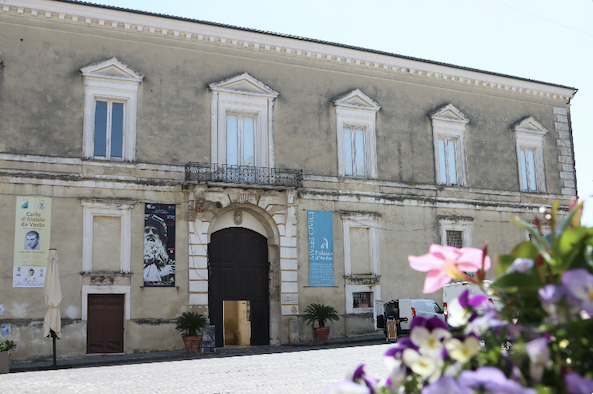
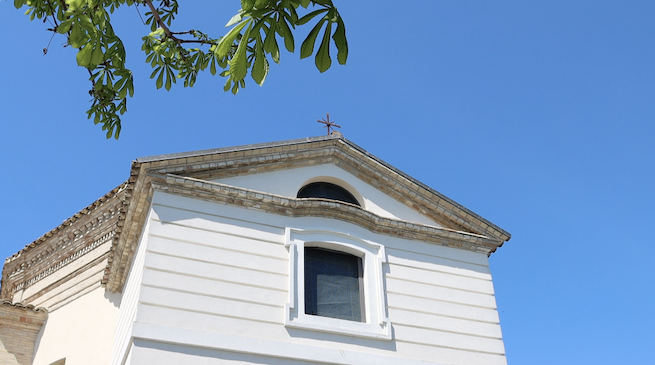
The Bourbon capital
In 1816 Vasto was proclaimed the capital of one of the three districts of Abruzzo Citeriore of the Kingdom of Naples. In the following years the city experienced a significant development in the urban layout and in the arts. The protagonist of that period was the architect Nicola Maria Pietrocola, who designed the construction of Palazzo Palmieri on the ruins of the south side of the Caldoresco Castle. You can also admire its neoclassical architecture in the Palazzo Genova Rulli with the adjoining noble church dedicated to Santa Filomena, in the beautiful Palazzo Monteferrante and in the very particular Church of Sant’Anna.
An essential place to understand the early 1800s will be the small church of San Michele, located on top of the Villa Comunale on the highest panoramic site in the historic centre. The temple, rebuilt in this form in 1835, has initiatory and Masonic symbols, starting from the orientation of the church which is that of a solar temple. Inside you will find the venerated statue of San Michele, already awarded in 1820 with the band of Grand Master of the Carboneria with, surprise!, as many as six other archangels. You will be in the only place in Catholic Christianity where the seven original archangels are still venerated and, moreover, with as many wooden statues complete with details on their virtues and characters.
The visit to the Bourbon city can end with a passage in Corso Plebiscito where the great palace of the Ciccarone barons is located, formerly of the De Nardis. From the balcony overlooking the main façade, Major Silvio Ciccarone declared on 4 September 1860 the annexation to the Savoy Kingdom of Sardinia, three days before Garibaldi’s entry into Naples. Vasto was, in fact, the first town of the Abruzzi to rise up against the Bourbons and join what, within a few months, would become the Kingdom of Italy.
Art nouveau and fascist histonio
With the proclamation of the Kingdom of Italy, Vasto lost the status of district capital. It would remain an agricultural country for almost a hundred years, a land of emigration to the United States and then Australia, where Perth is the largest colony of Vastesi still active in maintaining strong relations with the motherland. Significant changes to the layout of the city will only take place with the advent of the fascist dictatorship. In 1938 the name of the city was changed to Istonio. Considerable resources were invested in the transformation of the urban layout, above all for propaganda reasons.
The arrangement of the Largo del Castello and its dedication to Gabriele Rossetti are due to the Fascist period. The square, with the monument to the patriot and many references to the Masonic symbology, was inaugurated in 1926 in the presence of the crown prince, together with the fountain fed by the new Sinello aqueduct. The fascist regime also created Corso Littorio, today Corso Italia, which connects Piazza Rossetti with the Villa Comunale, built in 1923. In this, in addition to some monumental pine trees, you will find 185 silver holm oaks, each of which is dedicated to a fallen world War. Today this large urban axis is the daily heritage of the people of Vasto who, for the most part, no longer recognize the meanings of its many symbols.
From piazza Rossetti, this time going towards the old city, one enters piazza Diomede and from there the perspective opens up towards the cathedral. Even this part of the city was transformed during the Fascist regime which demolished a row of houses and created the elegant Corso di Vasto where the “Corsea degli Scarpari” once stood, full of artisan shops. Once you reach the clearing in front of the Cathedral of San Giuseppe, you can admire the 18th century bell tower and the details of the façade, some of which date back to 1293. You will notice that the beautiful church, overall with a Gothic appearance, does not have a uniform style. Also in this case it is a work of the last century, since the characteristic sunburst of the rose window was added in 1928 and the beautiful stained glass windows were created between 1923 and 1927.
